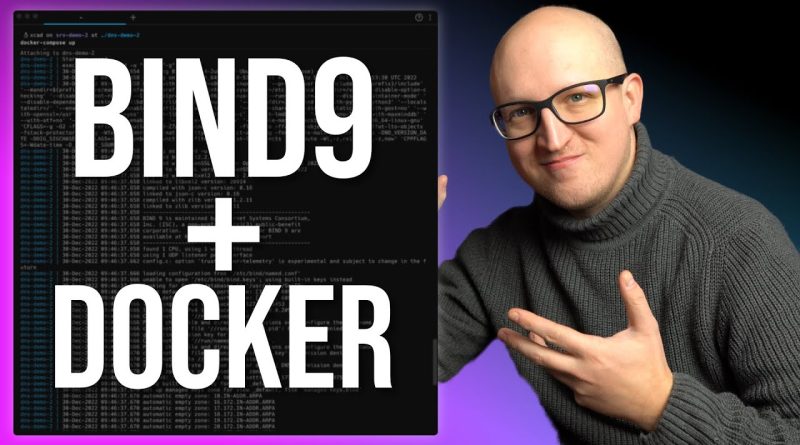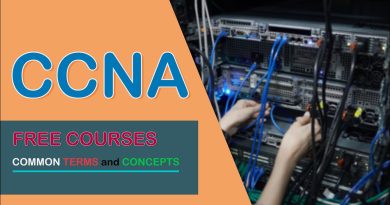You want a real DNS Server at home? (bind9 + docker)
In this Tutorial, we set up a free and open-source DNS server for your home labs. We will deploy bind9 on an Ubuntu Linux server running Docker and configure it to be an authoritative DNS server in my local network. And we also configure forwarders and access control lists to protect our internal networks.
Teleport-*: http://goteleport.com/thedigitallife
*Related Videos/Links*
– [How to use Docker and migrate your existing Apps to your Linux Server?](https://www.youtube.com/watch?v=y0GGQ2F2tvs)
– [Docker-Compose Tutorial](https://www.youtube.com/watch?v=qH4ZKfwbO8w)
– [Traefik Tutorial](https://youtu.be/wLrmmh1eI94)
– [Bind9 Configuration and Zone Files](https://bind9.readthedocs.io/en/v9_18_10/chapter3.html)
– [IANA’s DNS Resource Records TYPEs](https://www.iana.org/assignments/dns-parameters/dns-parameters.xhtml#dns-parameters-4)
________________
*💜 Support me and become a Fan!*
→ https://christianlempa.de/patreon
*💬 Join our Community!*
→ https://christianlempa.de/discord
________________
*Read my Tech Documentation*
https://christianlempa.de/docs
*My Gear and Equipment-**
https://christianlempa.de/kit
________________
Timestamps:
00:00 – Introduction
01:29 – Advertisement-*
02:15 – What was my DNS setup before?
04:47 – What is the plan?
08:44 – Install Bind9 in Docker
11:47 – Configure forwarders
19:15 – Configure a zone
29:17 – How to use Bind9 in your network?
________________
All links with “*” are affiliate links.
#homeserver #dns #docker
by Christian Lempa
linux dhcp server




I use DNSMASQ, which literally uses the /etc/hosts and dnsmasq.conf file, servers my purpose of Forward, Reverse and even Wildcard DNS for internal home lab/servers. Runs on a pretty old Raspberry Pi2, and that's the only service running on that old Pi along with SSH. Has been rock solid for over 3 years!
install pihole in a docker beside it and set pihole as the only forwarder. i have this in an ha pair with Kea DHCP and PHPIPAM
Finally a technical guy not going assembly lang
Is it possible to create DNS cache to have lets say more commonly used DNs entries saved locally in our cache?
I did not know you could use Visual Studio Code to simulataneously access an SSH terminal and access remote folders. You just made my job easier to drop files to my servers. Thank you, Christian.
What a Clean Tutorial, Never seen such tutorial on Bind Dns. Finally i Learned Bind Dns 🔥
if you skip the first 9 minutes you'll not miss anything as it's a complete waste of time. He doesn't start providing any real information
What console you using ? I like how it predicts the syntax
Danke, genau was ich gesucht hab. Da Bind9 nur die Config Files braucht kann man das auch Super als Infrastructure as Code direkt aus dem Git hochziehen lassen. Perfekt Terraform für die VM und dann Ansible & Docker um Bind9 zu deployen. So macht Infrastruktur Spaß 🙂
It was super tutorial, Thanks for this❤
where is video for using letsencrypt for the apps running on the internal networks?
where is the yaml file used in this video?
What extension do you use on vscode for dns .zone files?
This have been the most useful source I found for setting up an DNS Server, and granted I still had to troubleshoot somethings but this was so helpful and didn't over complicated things
With what VS Code Extension you are connecting via SSH to the servers? This extension is very cool and nice.
Grüße aus Berlin. Ich mag deine Videos. Könntest du noch DOH und DNSEC besprechen?
Why don't you use Quad9's dns servers? They have significantly better protection and also have top latencies.
.home is also a real TLD
im a bit confused here, did we make a DNS server that just forwards the queries to 3rd party servers or a recursive one that he's mentioning throughout the video, to me it seems like its just a forwarded instead of a recursive DNS server
powerdns +1